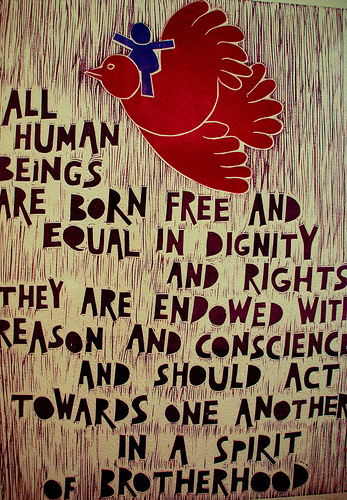Panto story lines and scripts usually make no direct reference to Christmas, and are almost always based on traditional children's stories, including fairy tales and tales from the Arabian Nights.While the familiarity of the audience with the original story is generally assumed, plot lines are almost always 'adapted' for comic or satirical effect, it being common for characters and situations from other stories to be interpolated into the plot.
The form has a number of conventions, some of which have changed or weakened a little over the years, and by no means all of which are obligatory. Some of these conventions were once common to other genres of popular theatre such as melodrama.
- The leading male juvenile character (the principal boy) - is traditionally played by a young woman, and usually in tight-fitting male garments (such as breeches) that make her female charms evident.
- An older woman (the pantomime dame - often the hero's mother) is usually played by a man in drag.
- Risqué double entendre, often wringing innuendo out of perfectly innocent phrases. This is, in theory, over the heads of the children in the audience.
- Audience participation, including calls of "He's behind you!" (or "Look behind you!"), and "Oh, yes it is!" and "Oh, no it isn't!" The audience is always encouraged to boo the villain and "awwwww" the poor victims, such as the rejected dame, who usually fancies the prince.
- A song combining a well-known tune with re-written lyrics. The audience is encouraged to sing the song; often one half of the audience is challenged to sing 'their' chorus louder than the other half.
- The animal, played by an actor in 'animal skin' or animal costume. It is often a pantomime horse or cow, played by two actors in a single costume, one as the head and front legs, the other as the body and back legs.
- The good fairy always enters from right side of the stage (from the audience's viewpoint) and the evil villain enters from the left. In the medieval mystery plays the right side of the stage symbolised Heaven and the left side symbolised Hell.
- Sometimes the story villain will squirt members of the audience with water guns or pretend to throw a bucket of 'water' at the audience that is actually full of streamers.
- The Chorus, who can be considered extras on-stage, and often appear in multiple scenes (but as different characters) and who perform a variety of songs and dances throughout the show. Due to their multiple roles they may have as much stage-time as the lead characters themselves.



